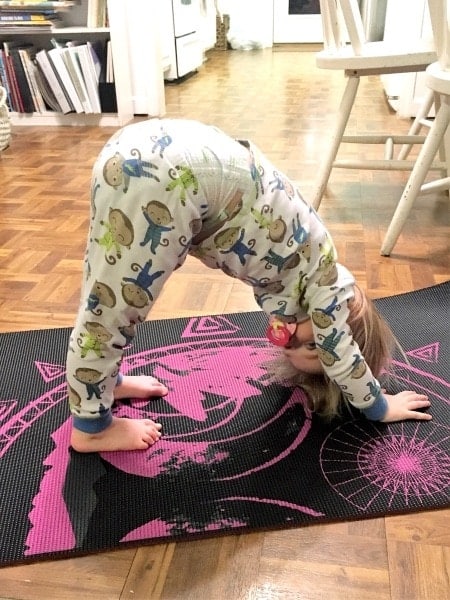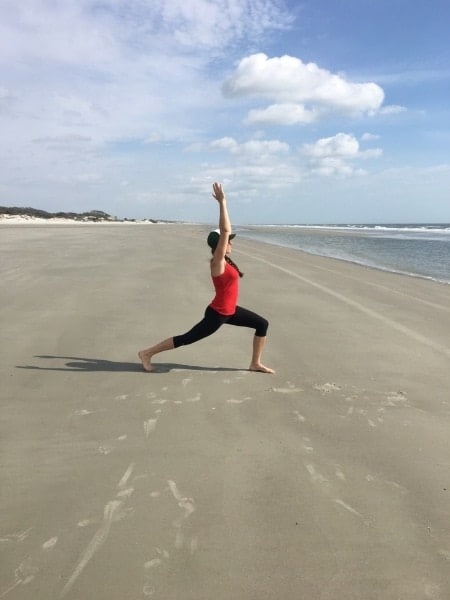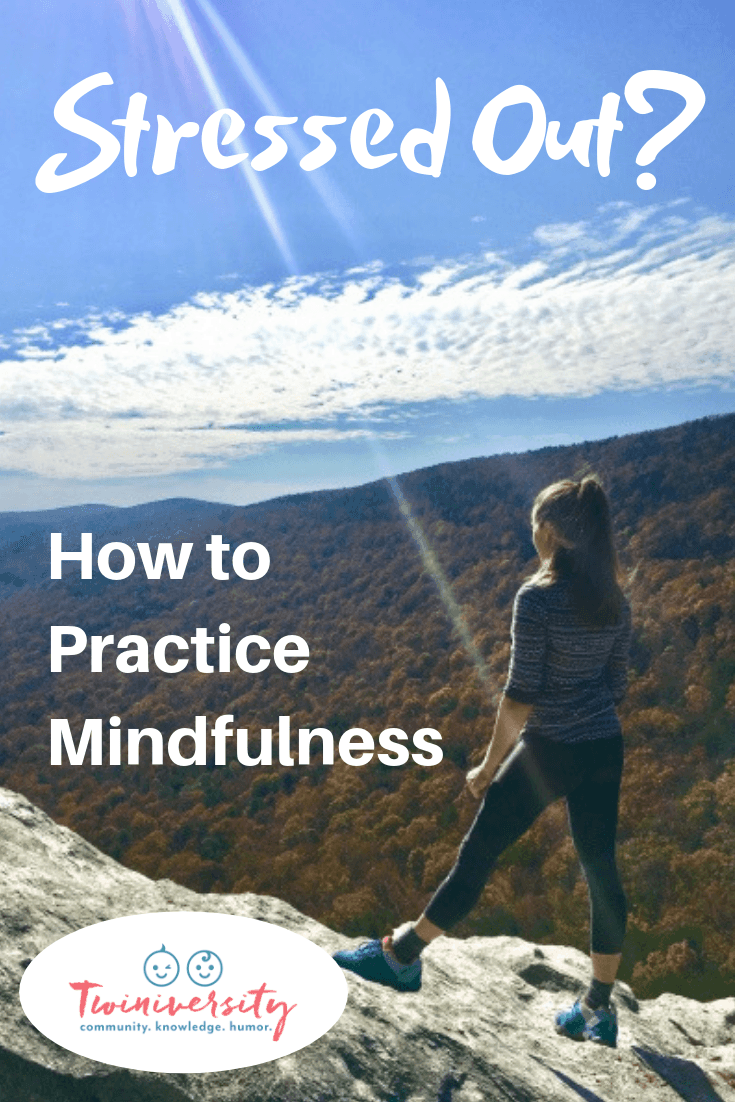Last updated on December 9th, 2023 at 11:42 pm
It’s no secret that being a parent of multiples can be stressful at times. Between the lack of sleep and constant demands of two or more babies, you may find yourself tense, anxious, and feeling stressed more often than not. And while many of the factors related to the stress of twin life are simply beyond our control, and a fair amount of stress is just par for the course, there are practices and techniques that can help parents cope with and even alleviate some of their stressful and anxious feelings.
One particular practice that can be especially helpful with stress and anxiety is the practice of mindfulness. Mindfulness is a pretty simple concept, but also an often neglected one. It is the lifestyle practice of intentionally being conscious of the present moment.
Now, I don’t know about you, but when I first began learning about mindfulness, I wasn’t sure if it was something I wanted to incorporate in my life. Honestly, I had spent most of my time trying NOT to be mindful of the fingerprints on the windows I just cleaned this morning, or of the pile of laundry that seems to double in size every 10 minutes. I’m currently trying not to be mindful of the fact that it’s a good hour and a half past my twins’ bedtime and yet the party is still going strong in their room.

Life with twins can be chaotic and messy and intentionally focusing on the not so magical reality of that can seem like a form of self-torture. Sometimes it’s just easier to look the other way and pretend you don’t notice your twins painting each other with diaper cream. Unfortunately, avoiding the issue can sometimes only perpetuate the stress, and so, after hearing about the many benefits of practicing mindfulness, I decided to learn more about it.
Mindfulness Has Been Proven to Significantly Help Reduce Stress and Anxiety
Additionally, it can help sharpen your attention and focus, and what twin parent couldn’t use a little help focusing through the fog of sleep-deprivation? While in its broad sense, mindfulness is a way of life, there are certain specific practices and techniques you can do to help you become more mindful. Many of these are free, don’t take much time, and don’t require any additional resources or props.
One of my favorite ways to instantaneously calm myself when I’m stressed is through mindful breathing. The idea is simple: deeply inhale through your nose to fill up your lungs, and then deeply exhale, letting all of the air back out. Instead of raising and lowering your shoulders with your breath, try to expand your abdomen and then pull it back in. Do this several times while focusing only on your breathing. If you find yourself distracted, bring your attention back to your breathing. Imagine exhaling away all the stress you feel, letting it go.

While this is an extremely simple exercise, it can have significant benefits. It is a quick, free, simple way to calm yourself in a stressful situation. You are essentially focusing on the one thing that really matters in the midst of the chaos: the breath, which is life.
Think About It: When Is the Last Time You Intentionally Took a Few Minutes to Just Breathe?
The first time I practiced mindful breathing, I felt such an overwhelming sense of calmness that I began to cry. The release of the stress I had been carrying around was such a relief, and I realized that while I had been taking the breaths necessary to stay alive, I could not remember the last time I had truly breathed. Recognizing the power of the breath was life-changing for me.

Mindful Breathing Is Also a Great Exercise to Teach Kids
It can help with temper tantrums and stressful situations for them also. I’ll never forget the first time I had the idea to teach this technique to my two-year-old son. He was having a meltdown, screaming and crying, and nothing I tried was helping to calm him down. He was too worked up to talk, so I couldn’t figure out what he was upset about. Finally, I had an idea, and I told him to look in my eyes. His tear-filled, panic-stricken eyes met mine, and I told him to breathe with me, then showed him how to deeply inhale and exhale. I told him we would repeat it three times and I was so proud of him as I watched him inhale and exhale with me. I was amazed at the end of the three breaths at how much calmer he was, and we were then able to work through his problem. It may sound overly simplistic, but mindful breathing is amazingly effective.
Another Way to Practice Mindfulness Is Through Yoga
In yoga, every move and breath is intentional and mindful. The proven benefits are abundant, from decreasing anxiety and depression, to increasing flexibility and improving posture. I decided to give yoga a try because I kept hearing such positive things about it and desperately needed to work on lowering my stress levels. I walked into that class with the wrong type of mat, wearing the wrong type of clothes, and without a clue what I was doing, but it was every bit as magical as I had hoped it would be. And then came the savasana. If you don’t know what that is, don’t worry, neither did I, but let me tell you, it is when grown-ups are allowed to lie down on a mat on the ground and take a nap. There is calm music and incense and eye pillows and blankets, and it is every bit as heavenly as it sounds. Of course, yoga is so much more than just incense and naps, it is a mindful practice of consciously connecting the mind and body, the breath and the poses.

Meditation Is a Mindful Practice That Is Completely Free and Can Have Significant Benefits
It is the practice of learning to let go of the many intrusive, anxious thoughts that can bombard you daily, by training your mind to focus on what you choose to focus on, and to let go of the rest. While meditation does require a calm, distraction-free setting, it does not have to be time-consuming. In fact, meditating for only 5-10 minutes a day can produce results. Meditating is not a religious practice, rather, it is an exercise that has been backed up by scientific research to help calm the mind and produce focus.
A simple meditation practice is to sit in a comfortable, quiet place and set a timer for five minutes. Focus on your breathing. Whenever your mind gets distracted, notice the distraction without judgment, and then refocus on your breathing, continuing until the timer goes off. The key in meditation is to not judge or react to thoughts as they distract you but to simply let them go, one by one, refocusing on your breathing.
Journaling Is a Great Way to Practice Mindfulness and Cope With Stress
Mindful journaling involves giving a name to your present emotions, and unapologetically acknowledging how you feel. Often, once you’ve taken the time to give a name to your current emotion and write about it, you can then let it go and move on. Naming an emotion can, in a sense, diminish some of its power over you and help you determine the best way to approach the problem. Notebooks are cheap and journaling doesn’t have to be time consuming or complicated. Mindful journaling can help you not only deal with stress but also enjoy and relish the beauty that can often be overlooked in daily life. Additionally, writing down a few things you are grateful for each day can improve your outlook on life and increase optimism.
As it turns out, the more I have learned about mindfulness, the more I’ve realized I was wrong about it. True, it is a practice of being conscious in the present moment, but the point is not to judge the present moment with the reaction of frustration or resentment, but rather to simply be in the present moment. And while mindfulness won’t get those fingerprints off the windows, and the twins might still be having a party in their room while they’re supposed to be sleeping, when you take the time to practice mindfulness, you may just find yourself better able to calmly respond to stressful situations when they arise.
Related Articles
- Gentle Reminder: You’re Not Relaxing, You’re Recovering
- Making Your Social Life a Priority as a Parent
- Why Parent “Me Time” is a MUST!








